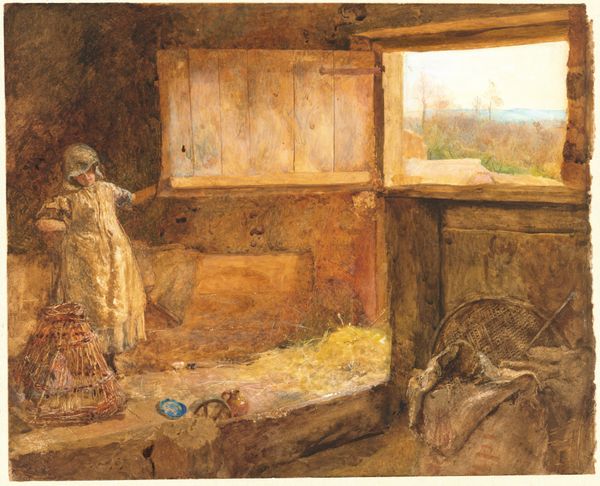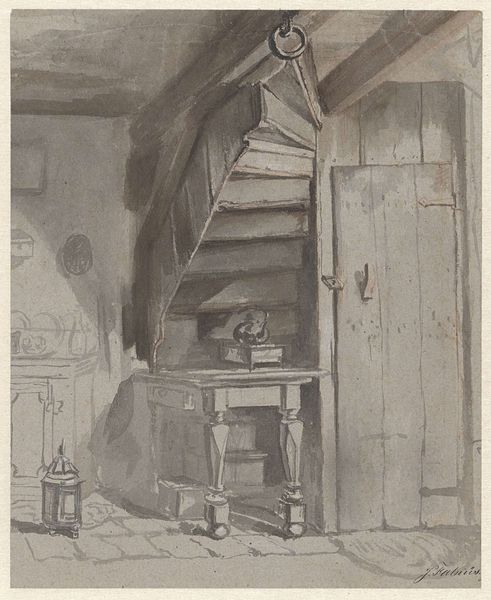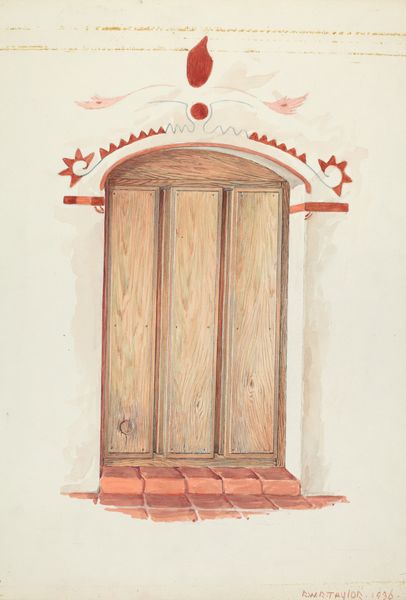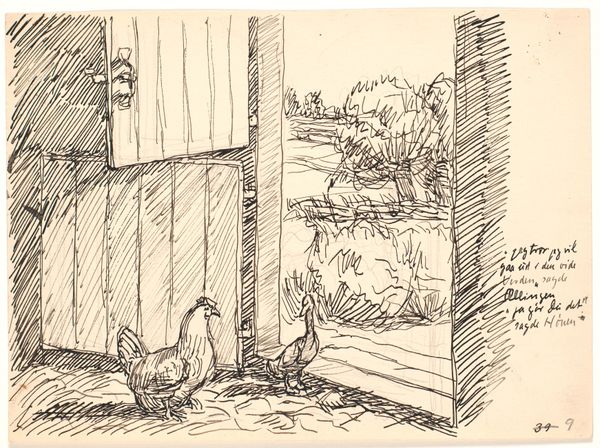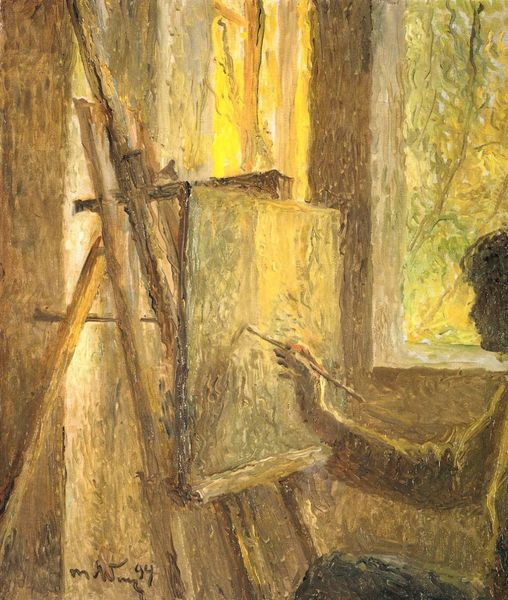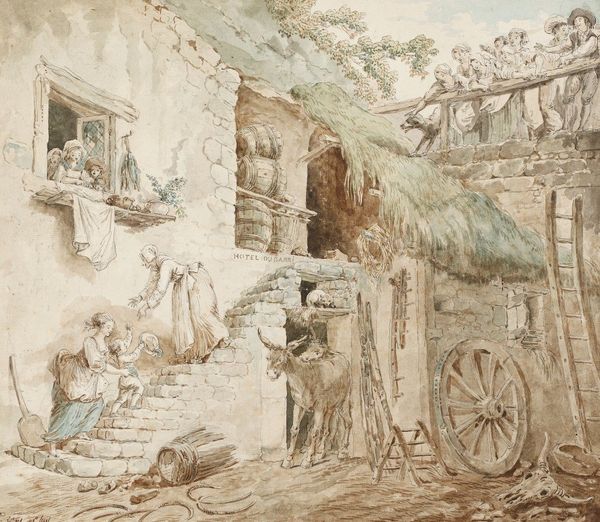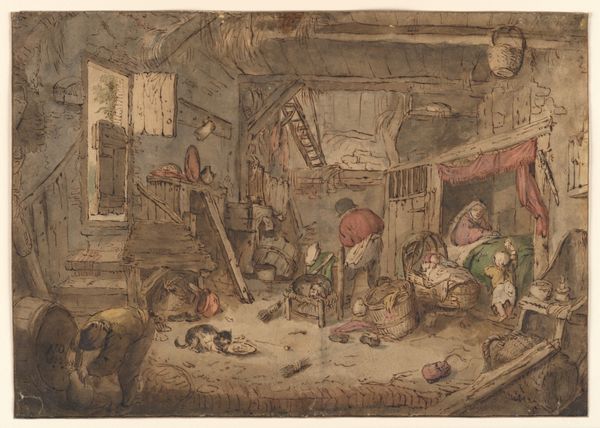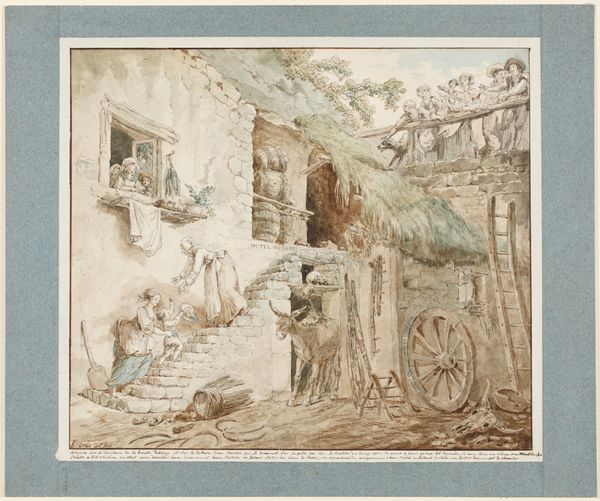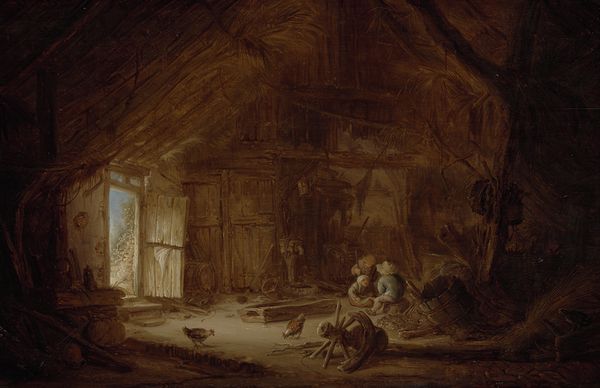
Dimensions: 254 mm × 184 mm
Copyright: Public Domain
Editor: So, this is "Brick Wall with Open Door and Shovel," painted in 1852. It’s currently at the Art Institute of Chicago. It seems like a simple genre painting. What I find particularly compelling is its ordinariness – the almost claustrophobic sense of a small, cluttered space. What do you see in this piece? Curator: It's precisely this ordinariness that speaks volumes. I see a visual document embedded within the broader context of the Realist movement. Think about what artists chose to depict and elevate into "high art." Why show a humble workspace instead of, say, a grand historical narrative? Editor: Maybe it's about finding beauty in the mundane? Curator: Possibly, but also perhaps a statement about labor and the value placed on working-class life. What social structures determined what images circulated and which ones were dismissed? The presence of the shovel and produce suggests self-sufficiency, aligning with agrarian ideals that romanticized rural life even as industrialization rapidly changed society. The art market, then as now, influences artistic production. Editor: So you're saying that even a seemingly simple watercolor like this might carry political undertones? Curator: Absolutely. The very act of depicting this space, displaying it in a gallery or museum – institutions that have historically favored elite patronage – could be viewed as a challenge to established hierarchies. Do you think this image could prompt reflections about labor conditions, wealth distribution or access to essential resources in present-day context? Editor: I see your point. It's not just a pretty picture; it’s an argument. It makes you wonder who gets to decide what’s worthy of our attention and reflection. I will now think twice next time I casually pass through these galleries. Thank you! Curator: Precisely! And that's precisely where the power of art resides: prompting us to question the established norms. It shows that institutions like museums carry an immense weight of socio-political factors behind the works they choose to acquire.
Comments
No comments
Be the first to comment and join the conversation on the ultimate creative platform.
